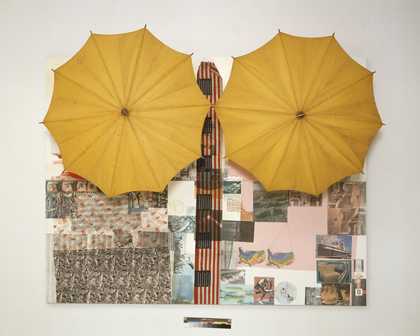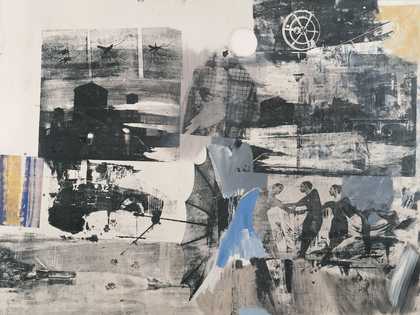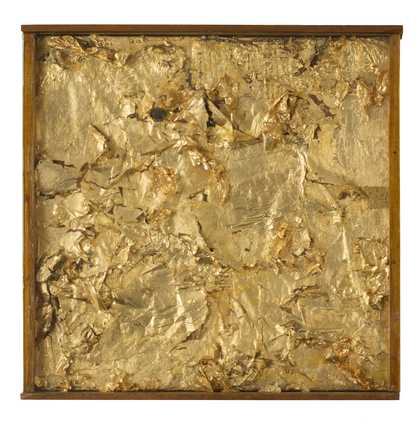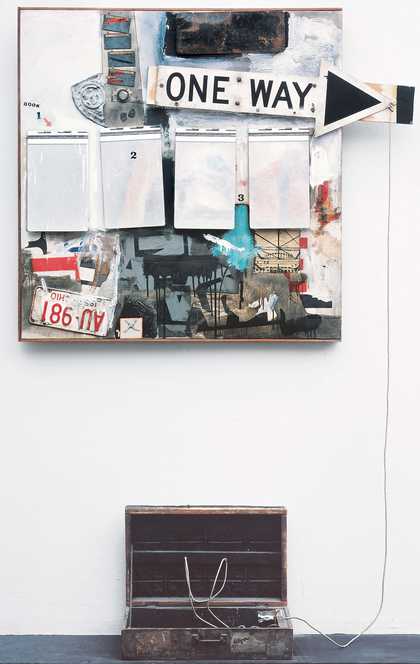Over five weeks explore the pioneering art of Robert Rauschenberg with the like-minded artist and poet SJ Fowler. Through talks, discussions and practical writing exercises, participants will follow Rauschenberg’s innovations fundamental to 20th century art, while surrounded by his work. Inspired equally by poetry, fiction, theatre, sonic art, visual art, installation and performance, Fowler will also draw from the people and places that inspired Rauschenberg’s remarkable and multidisciplinary practice.
Discover Rauschenberg’s use of material, his ground-breaking combines, his engagement with popular and global culture beyond the US, his exploration of collaboration at the Black Mountain College, his work in performance, and his telling use of technology. This course is a chance to trace this pioneering artist’s life and continued reinvention, and to explore in their own work the lessons we can draw from his extraordinary legacy.
Biography
SJ Fowler is a poet and artist. He works in the modernist and avant-garde traditions, across poetry, fiction, theatre, sonic art, visual art, installation and performance. He has published various collections of poetry and text, and been commissioned by Tate Modern, BBC Radio 3, The British Council, Tate Britain, Liverpool Biennial and Wellcome Collection.
Programme
Week 1: A Question of Art
Monday 20 February
An introduction to the course framed by an exploration of Rauschenberg’s lifelong sense of curiosity and innovation. We will explore the effect his early life and his dyslexia had on his constant questioning of what art is, and his refusal to accept conventional categorisation. Working ‘in the gap between art and life’ we will discuss works such as Erased de Kooning Drawing and White Paintings.
Week 2: Material and Method
Monday 27 February
This week we will examine Rauschenberg’s famous Combines as just one small part of a remarkably multifaceted practice that includes explorations of painting, drawing, found sculpture, collage, photography, printmaking, silk-screen printing, papermaking and performance.
Week 3: Collaboration and Performance
Monday 6 March
From attending Black Mountain College to his time designing theatre sets, collaboration was fundamental to Rauschenberg’s approach to art, ever collective and against the artist as singular. We will look at the effect this communal practise had on his work and its role in his journey to becoming a pioneer of performance art.
Week 4: Technology
Monday 13 March
Ever mindful of his times, Rauschenberg was also an innovator in exploring the intersections between post-war technology and art. From launching Experiments in Art and Technology (E.A.T.) with Billy Klüver to collaborate with engineers, to using the latest digital iris prints and biodegradable vegetable dyes to underscore his environmentalism, we will discover Rauschenberg’s pioneering steps in this field.
Week 5: Internationalism, Pop Culture and Ethics
Monday 20 March
Tying together the great concerns of Rauschenberg’s life, we will explore his ambitious ROCI project (Rauschenberg Overseas Culture Interchange), his constant engagement with American popular culture and pop art, and the underlying ethical concerns which drove these, and arguably all of his works.





